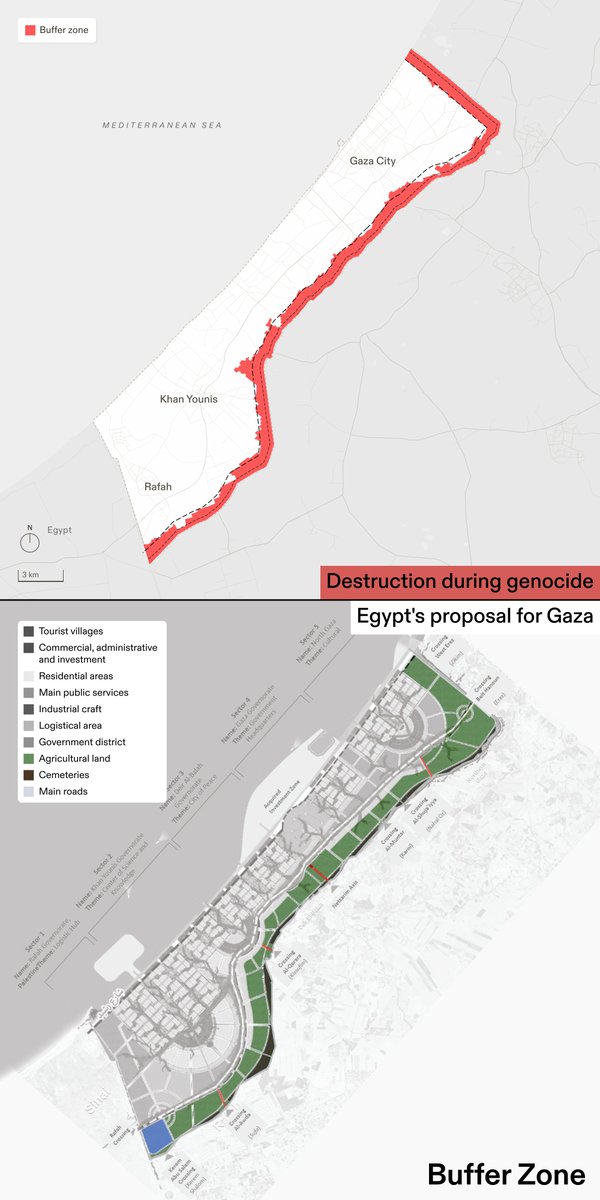Israel is besieging Gaza City from three directions, pushing the nearly 1m Palestinians currently sheltering there towards southern Gaza.
Each military advance flattens homes and infrastructure in its path, threatening the erasure of millennia-old Gaza City, and displacing the people sheltering there. Most of the areas in southern Gaza which the military have allocated for relocation are within ‘no-go’ zones, or in areas unsuitable for habitation.
Each military advance flattens homes and infrastructure in its path, threatening the erasure of millennia-old Gaza City, and displacing the people sheltering there. Most of the areas in southern Gaza which the military have allocated for relocation are within ‘no-go’ zones, or in areas unsuitable for habitation.

Israeli troops are advancing towards Gaza City from three directions: Jabalia in the north, Shujaiya in the east, and—most recently—the Netzarim Corridor in the south. This leaves Palestinians with only one place to go: towards the coast, along al-Rashid Road and into southern Gaza.



A comparison of satellite images from 9 and 25 August reveals the rapid dismantling of dense tent camps in Gaza City as Israel’s ground invasion has advanced. Meanwhile, tents, homes, markets, and community kitchens in the rest of the city have instead been subject to relentless bombardment, leaving the besieged, starving population with few options but to flee south.


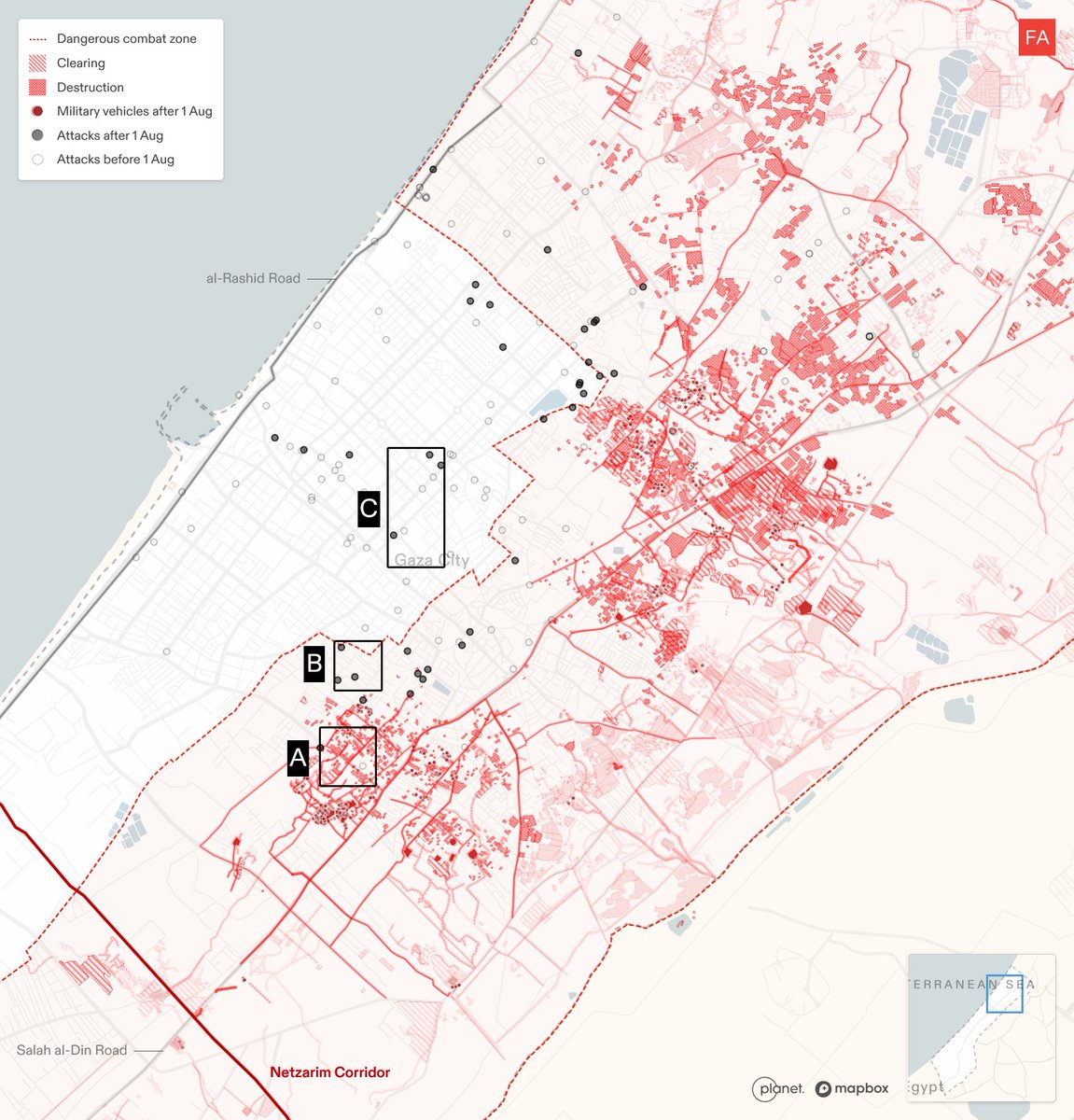
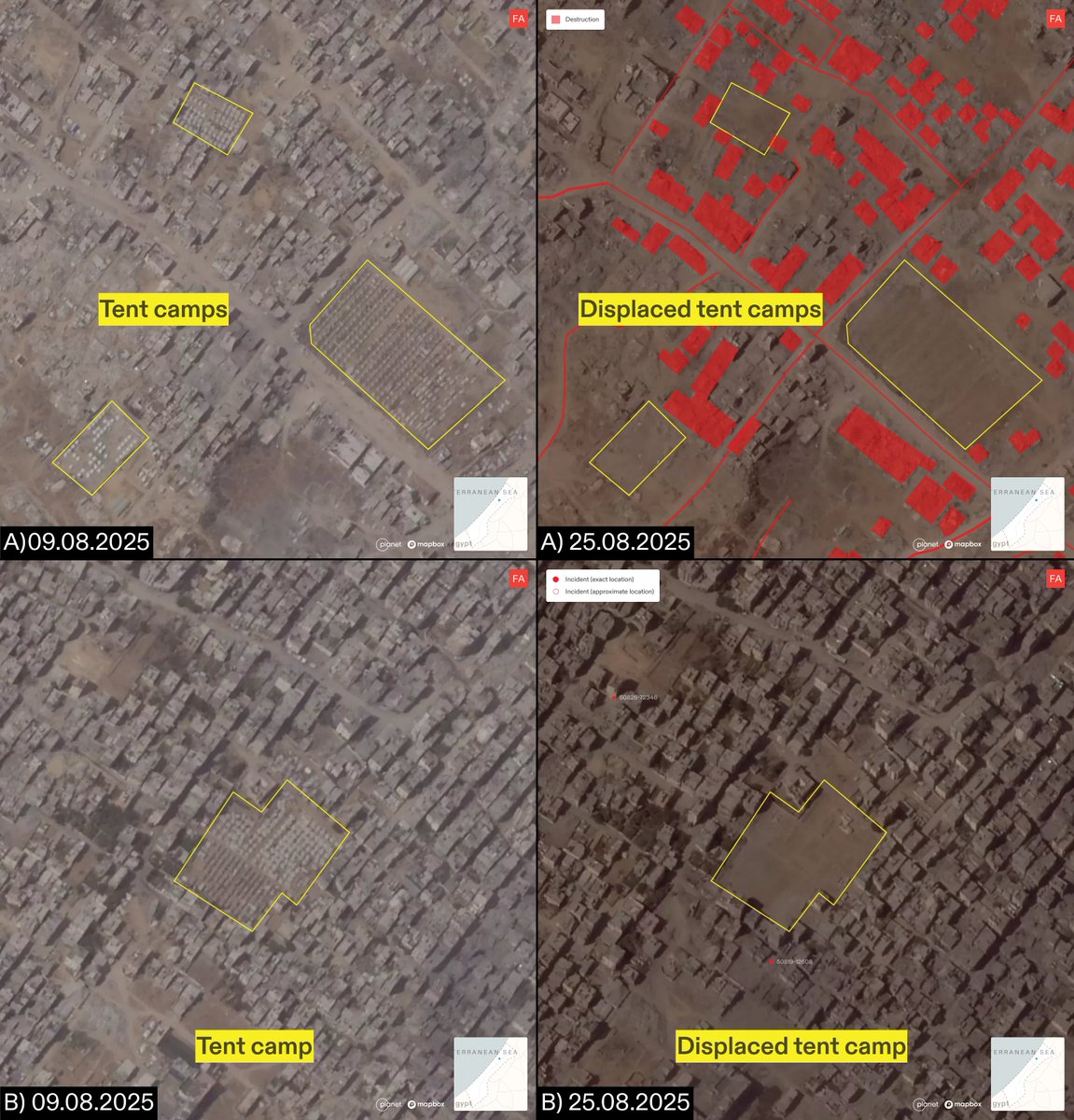

On 27 August, an Israeli military official posted a map on X that designated areas in southern Gaza as destinations for people evacuating from Gaza City. Our analysis shows:
• The marked locations are too small to accommodate the displaced population: they total 7.4 square kilometres — less than half the size of the already densely populated area sheltering people in Gaza City.
• The areas are scattered across southern Gaza, which would compound the impact of displacement by splitting up communities.
• Of these locations, 67% fall within ‘no-go’ zones where civilians remain under threat of military violence.
• Physical features—like sand dunes, greenhouses, and a former rubbish dump—render many locations unsuitable for habitation.

• The marked locations are too small to accommodate the displaced population: they total 7.4 square kilometres — less than half the size of the already densely populated area sheltering people in Gaza City.
• The areas are scattered across southern Gaza, which would compound the impact of displacement by splitting up communities.
• Of these locations, 67% fall within ‘no-go’ zones where civilians remain under threat of military violence.
• Physical features—like sand dunes, greenhouses, and a former rubbish dump—render many locations unsuitable for habitation.
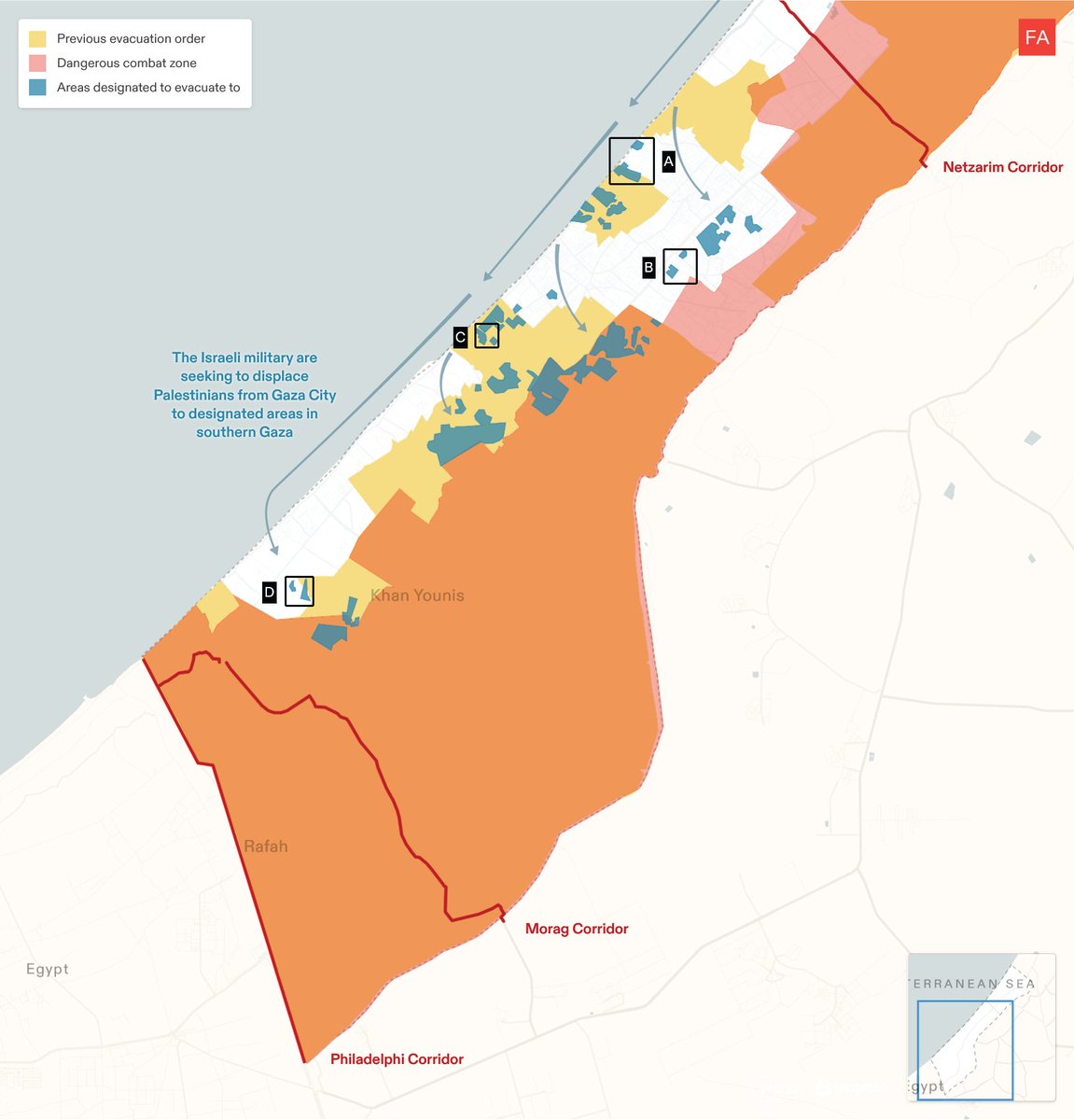
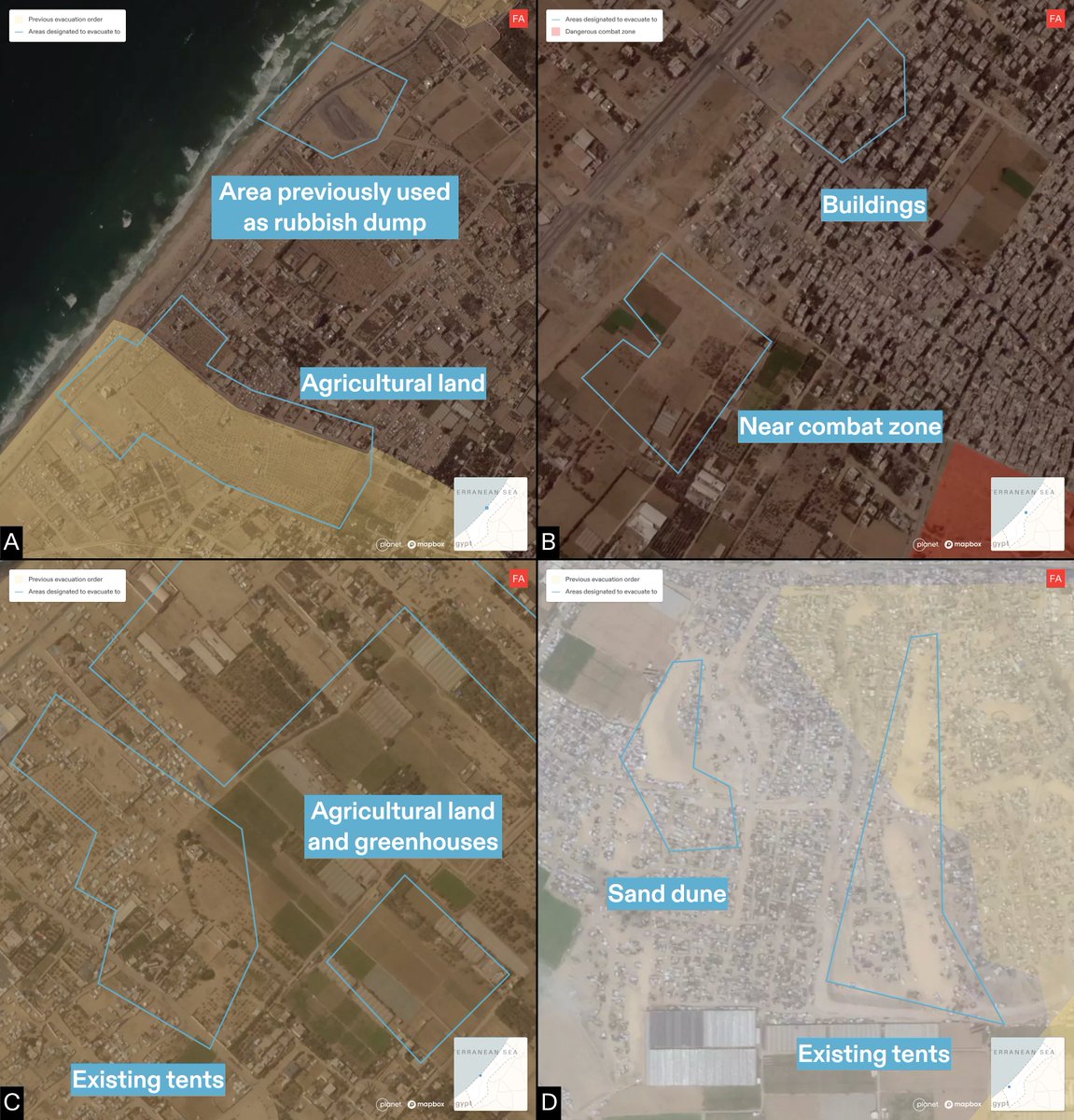
What we are currently witnessing in Gaza City is an annihilatory campaign of displacement and erasure not seen since the Nakba.
In 1948, Zionist forces often left besieged Palestinian villages with just one exit route to force and control flight, splintering communities into ever-smaller ‘islands’ of land in Gaza, the West Bank, and neighbouring countries, while systematically obliterating traces of the former villages to deny the possibility of return. Today, the same tactics persist, of scattering people into fragmented zones and perpetuating the cycle of permanent displacement.
In 1948, Zionist forces often left besieged Palestinian villages with just one exit route to force and control flight, splintering communities into ever-smaller ‘islands’ of land in Gaza, the West Bank, and neighbouring countries, while systematically obliterating traces of the former villages to deny the possibility of return. Today, the same tactics persist, of scattering people into fragmented zones and perpetuating the cycle of permanent displacement.
Gaza City––the heart of the Strip, sustaining the lives of hundreds of thousands of Palestinian refugees––is under existential threat. Its survival, and with it Gaza’s future, now depends on protecting its remaining population.
• • •
Missing some Tweet in this thread? You can try to
force a refresh




